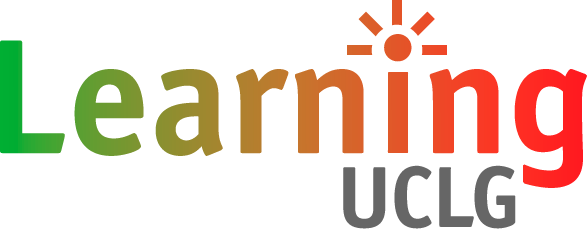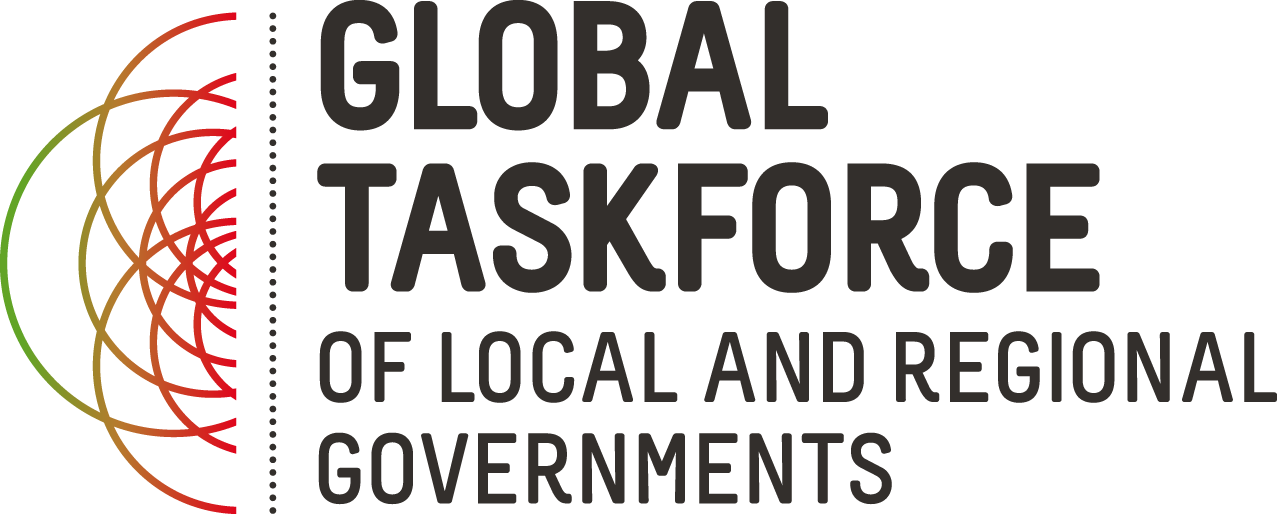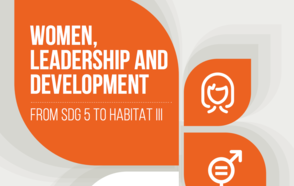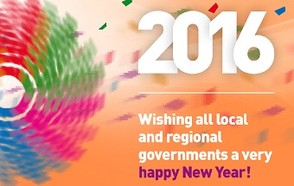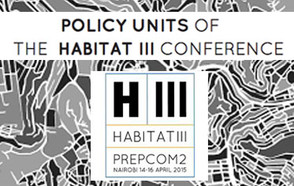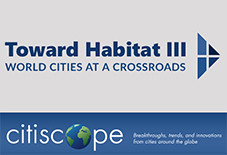

By Greg Scruggs, Citiscope’s Habitat III correspondent.
Worries focus on new rules governing this year’s urbanization conference — and push back on suggestions that those guidelines are the most progressive ever adopted for a U.N. event.
The process of negotiating documents at the United Nations is a marathon, not a sprint. Casual observers of recent U. N. success stories, such as the Sustainable Development Goals and the Paris Agreement on climate change, may not be aware of the meticulous months, even years, that preceded the triumphant photo of a signing ceremony in New York or Paris.
Likewise, there is a painstaking process underway to arrive at the New Urban Agenda, the 20-year urbanization strategy that will be agreed upon in October at the U. N. Conference on Housing and Sustainable Urban Development, better known as Habitat III.
By the time delegates gather in Quito, Ecuador, many of the details of the New Urban Agenda will have been hashed out at key negotiations in New York and Indonesia. The preliminary document will have been published in April after an intensive drafting session by a 10-member U. N. committee known as the Habitat III Bureau.
[See: The drafters: Meet the two women leading the Habitat III Bureau]
In turn, who gets to recommend changes to that draft throughout the spring and summer of 2016, as well as during the final days in Quito, was decided by the U. N. General Assembly in late December. Now a month later, representatives of NGOs, networks of local leaders, civil society activists and others with a stake in the New Urban Agenda have had a chance to digest the nuances of these guidelines, known in U. N. parlance as “rules of procedure” and “modalities of participation.”
Some longtime observers, including those who were in Istanbul for Habitat II in 1996, are giving the rules mixed reviews. But most concur that the overall Habitat III preparation is an improvement over its predecessor.
“The fact that there is this whole process — we did not have that going into Habitat II,” the Huairou Commission’s Jan Petersen said, referring to the multiple pathways that have been set up to receive broad input — the policy units, Urban Thinkers Campuses, the General Assembly of Partners and World Urban Campaign’s The City We Need initiative.
“This kind of ongoing collaboration with the grass roots, civil society, women and government working together to create input into the document — that certainly did not happen at Habitat II,” she said.
Informal channels

Still, some are also pointing to certain differences between Habitat II and Habitat III as cause for concern.
“The official modalities for Habitat III are much better for both stakeholders and local government than Habitat II, but it is unlikely the practice of Habitat III will be as advanced as the practice of Habitat II.” Felix Dodds, Communitas Coalition
Some 10,000 people descended on Istanbul in June 1996 for what was described then as the “summit of summits”, the last major global conference before the end of the century. Of course, it was a much smaller number that represented national governments — the delegations that call the shots when it comes to U. N. affairs.
But much of the crowds in Istanbul were made up of activists, NGOs, academics, local government officials and others. While these outsiders did not have formal permission to make changes to the document that came to be known as the Habitat Agenda, they had influence nonetheless.
“There was a tremendous interest in Habitat II among non-governmental and civil society organizations, which created an atmosphere in which UN-Habitat was very receptive to engagement,” said Barry Pinsky, executive director of Rooftops International, a Canadian NGO. He was in Istanbul and deeply involved in a body known as the International Facilitating Group, a loose network of NGOs that organized ahead of Habitat II.
“There was a very healthy interaction between the official process and civil society organizations that wanted to be able to participate in the deliberations around the Habitat Agenda,” Pinsky recalled. “Generally speaking everyone followed the rules, but with a lot of informal and back channels available.”
The result, both at Istanbul and in the run-up to Habitat II, was an unprecedented level of influence exerted by those outside national government.
[See: Let’s not forget the legacy of inclusiveness from Habitat II]
At informal meetings held in Paris before Habitat II, “Stakeholders were allowed to enter text into the negotiations, and if a government took up that text, then the text became a live text, said the Communitas Coalition’s Felix Dodds, a longtime observer of the inner workings of the U. N.
This type of process continued at the Habitat II conference itself, Dodds said, “with the NGO text amendments being published as an official U. N. information document — the first time that happened at a U. N. negotiation.”
‘Wide-reaching privileges’
Since Habitat II, a lot has happened in the U. N. universe to open the door for greater public access and participation in official processes. Advocates have hailed the process to come up with the SDGs as particularly inclusive. Indeed, the recent Habitat III resolution specifically adopts some of the SDGs’ rules.
“People, coalitions and different clusters of organizations need to be really well organized in tracking the official process through friendly government delegations on official issues. If the homework is done, the access is there. If it isn’t, people will be frustrated.” Barry Pinsky Executive director, Rooftops International
Buried in Annex II, the resolution — formally, Resolution A/70/473 — essentially copied from the SDGs review mechanism, a body known as the High-Level Political Forum (HLPF). Those rules allow accredited individuals and organizations to attend and intervene in official meetings, submit written and oral recommendations, organize side events and access official documents.
[See: U. N. General Assembly adopts Habitat III rules, ending 8 months of limbo]
The HLPF structure has indeed received widespread praise. “No resolution adopted by the U. N. General Assembly has ever accorded non-governmental organizations and major groups so wide reaching privileges,” Jan-Gustav Strandenaes, a Norwegian governance consultant, told a U. N. committee in 2014.
Borrowing from the SDGs process means that, on paper, the rules for Habitat III look exceptionally open. Still, several close observers of the process are now offering cautions.
“The official modalities for Habitat III are much better for both stakeholders and local government than Habitat II, but it is unlikely the practice of Habitat III will be as advanced as the practice of Habitat II,” Dodds said. He also noted, “How these [HLPF modalities] will be interpreted we will find out in the next 10 months for Habitat. I would see these as a floor to build a more innovative participation on.”
In referring to the “practice” of Habitat III, Dodds means that the unique informal arrangements in Istanbul, which arose organically, may not be replicated in Quito, even with the new, seemingly more-progressive rules.
[See: Civil society must ensure equitable inclusion in Habitat III]
Pinsky concurs with that assessment, describing Habitat II as “a combination of the energy between civil society organizations and NGOs, the willingness of government delegations and UN-Habitat to engage both formally and informally, and a very successful use of the formal process.”
According to Pinsky, the hard work to ensure access in Istanbul came well before the conference — an approach that he suggests would do well to be adopted in the remaining months before Quito.
“People, coalitions and different clusters of organizations need to be really well organized in tracking the official process through friendly government delegations on official issues,” he said. “If the homework is done, the access is there. If it isn’t, people will be frustrated because [the conference] doesn’t allow for anything more than formal statements.”
He continued: “At Habitat II, energy was there, people put in the time, and it was reflected in the final document.”
‘Very subjective’
Relying on the whim of a chairperson for permission to speak is not exactly the kind of access that civil society was hoping for, Araújo said. She called the rule “very subjective to the time and circumstances of the moment.”
“This kind of ongoing collaboration with the grass roots, civil society, women and government working together to create input into the document — that certainly did not happen at Habitat II.” Jan Petersen Huairou Commission
From her colleague Petersen’s recollections of Habitat II, that was not the case in Istanbul. “They had this whole process where the civil society organizations were divided into groups, and they all got to speak to governments directly,” she recalled.
“Thus far,” Araújo said, “there is nothing yet suggesting that stakeholders will be at private meetings when the time comes” at Habitat III.
Those closed-door sessions, moreover, are where the important details of a multilateral agreement are often hashed out. “Access to working groups is a huge concern, because all the real work goes on in those venues,” Pinsky said. “By the time it comes back to committees, most of the details are hammered out, and it’s hard to get back at it later.”
Yet Habitat III officials say that stakeholders will have access to these crucial meetings. A spokesperson for the Habitat III Secretariat told Citiscope that working groups and other such private meetings fall under the umbrella of “official meetings”, which are specifically open according to the chapter in Annex II that borrows from the SDGs.
That would be a change from Habitat III preparatory negotiations known as PrepCom 2, held last year in Nairobi before the new rules of procedure were adopted. At that time, limitations on civil society access were the norm. Pinsky said he tried to sit in on private working-group meetings but was turned away.
“The security guards were so instructed and did not let people in who were not on government delegations,” he said. “I am pleased to hear that they may change this for PrepCom 3 and moving forward, but if you read the wording in the resolution, it’s clear that access is restricted.”
PrepCom 3, a key full final round of negotiations before the Habitat III conference, will take place in Surabaya, Indonesia, in late July.
[See: Citiscope’s calendar of Habitat III events]
Positive ‘signs of the times’
While civil society has mixed emotions about the Habitat III rules, local authorities are cheering the resolution alongside calls to push the envelope even further.
“We should congratulate ourselves for this outcome,” said Emilia Saiz, who represents the United Cities and Local Governments network in U. N. negotiations. “Not being positive about this resolution would mean not reading correctly the signs of the times.”
Still, she added, “Being satisfied is different.”
For example, UCLG had agitated for special accreditation of local authorities as a category separate from other actors outside of national governments, given that Habitat III is chiefly concerned with cities, the political domain of local officials. They also hoped for a specified moment to provide input on the negotiations, rather than jostling with the larger community of stakeholders for a chance at the microphone.
[See: Cities must be part of defining the New Urban Agenda]
“Despite the fact that it does not represent the step forward hoped for by our constituency 20 years on from Habitat II, it still provides sound bases for local and regional governments to actively participate and influence the process,” Saiz said. “Much will be in our hands, in terms of raising visibility and bringing concrete proposals.”
In the meantime, whatever the access to private meetings ends up being around Habitat III, both civil society and local authorities will get a key chance to make their case to national governments at two-day hearings in May and June. These, too, were new additions to the calendar included in the recently adopted U. N. resolution.
According to Dodds, such hearings have been a regular feature at the United Nations since at least 1997. He cautioned, however, that some of those hearings “are well known to be badly attended by member states and often become a place for stakeholders to talk to each other.”
In June, for example, one such hearing for civil society to air concerns about the SDGs was held to a nearly empty U. N. General Assembly Hall.
[See: Stakeholders push local agenda at SDGs hearings]
However events go this spring, advocates for local governments are already thinking about the long game. As with the High-Level Political Forum that is designed to conduct an annual review of the SDGs, they anticipate that Habitat III will result in some kind of follow-up mechanism with a decision-making architecture. There they hope to have the formal inclusion of local officials, with plans to make proposals along these lines later this year.
Stay up to date on all Habitat III news! Sign up for Citiscope’s weekly newsletter here.
Source: Citiscope








